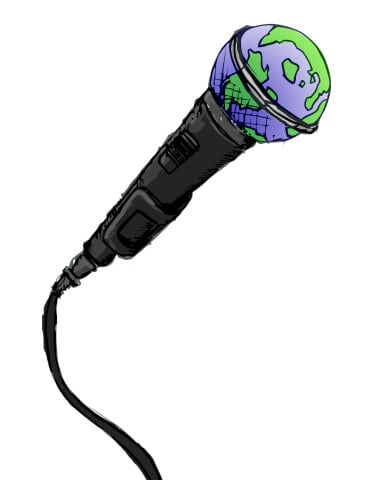Students concerned with the study of the earth may be excited to know that the new year signals a return of the Western Inter-University Geoscience Conference to the University of Saskatchewan for the first time in over a decade.
From Jan. 6–9, the 52nd annual WIUGC will be hosted by the U of S. Rotating between different Canadian universities each year, the student-run conference focuses on the latest research and developments within the geological sciences. The conference aims to bring students, professors and industry professionals together through a common interest in the scientific study of the earth.
Kyle Snarr, third-year geology student at the U of S, is the treasurer and fundraising co-ordinator for this year’s WIUGC and speaks to the relevance of the conference to the campus community.
“The main purpose of the conference is to meet other students from across Canada, network with them and industry professionals, present research and attend talks about geology pertaining to Saskatchewan,” Snarr said in an email to the Sheaf.
The U of S is no stranger to hosting WIUGC however, as the first one was held in Saskatoon in 1964.
WIUGC offers several different opportunities for students to enrich their knowledge of the geosciences. Since geoscience includes geological engineering, geophysics and even environmental  science, there are topics that may interest a wide variety of students.
science, there are topics that may interest a wide variety of students.
Conference attendees will partake in a variety of educational experiences. Several geoscience professionals will be giving talks and there will also be students presenting their own research.
Field trips will be taken to the PotashCorp Mine and the Canadian Light Source Synchrotron, among other relevant places, and the conference will end with a banquet held at the Radisson Hotel in downtown Saskatoon.
While geoscience is no doubt of worldly interest, much of the conference focuses on geological concepts that are unique to Saskatchewan.
“Topics include hydrogeology, mining techniques, paleontology — that’s right, dinosaurs — and of course resource-based presentations on petroleum and mineral exploration,” Snarr said.
Despite the geoscience theme, Snarr emphasizes that WIUGC is for more than just those who study geology.
“Any U of S student, regardless of their college and year, is allowed to attend the conference. We currently have doubled numbers from last year, so if you are interested in any aspect of the geosciences we highly recommend checking out the website,” Snarr said.
As geoscience is a diverse field, it translates to a variety of disciplines and even applies to everyday life.
“The geosciences are related to the larger community in ways that are both expected and unexpected. Resource-based careers such as those in potash are a prime example, but the geosciences are also involved in flood control, earthquakes and identifying minerals that have health hazards, such as some of the asbestos species,” Snarr said.
For those that do study geology and other sciences, Snarr describes the importance of being involved with the latest research and other developments.
“In the science discipline, research is constantly being updated in academics but students are sheltered from relevant information related to industry related topics,” Snarr said. “It is important to attend these industry events so you can better understand what your career work will actually look like.”
Ultimately, WIUGC is about more than just rocks and dinosaur bones. It is also about forging connections between different groups of people.
“It is important to interact with other students at other universities because when we actually finish our degrees — fingers crossed — these are the people who you will be working for and with in the industry. It is good to know people,” Snarr said. “Not to mention get a little crazy at the many social events being held each night.”
If attending WIUGC gets students hooked on the geosciences, Snarr offers up this information:
“If you are starting to be like, ‘Damn, geology sounds pretty darn neat,’ come by the Ore Gangue [the U of S Geology Students Society] in the Geology Building on the second floor and we can show you rocks and answer any questions you may have.”